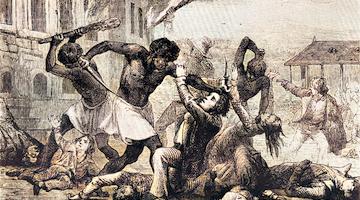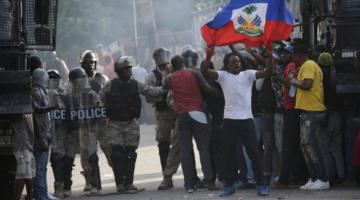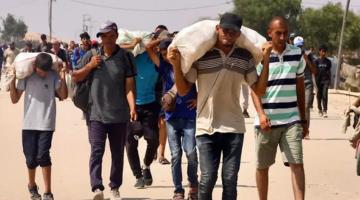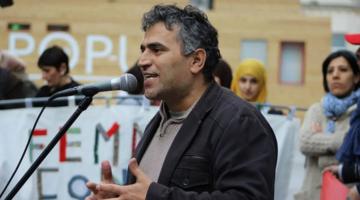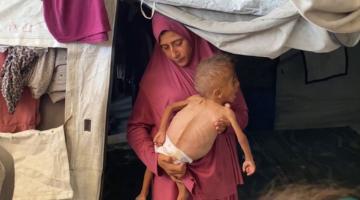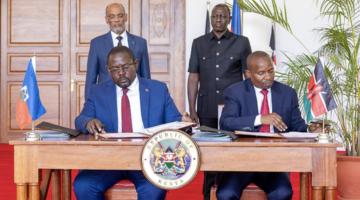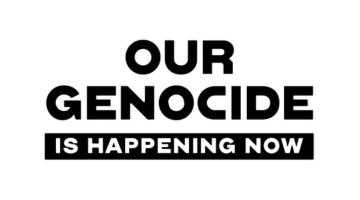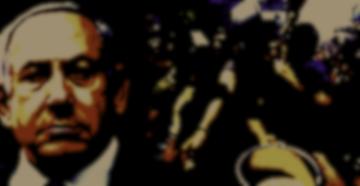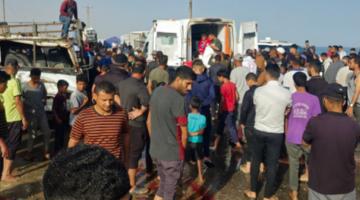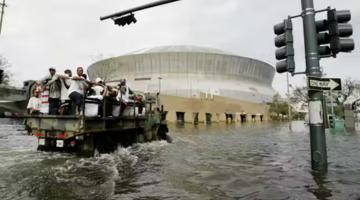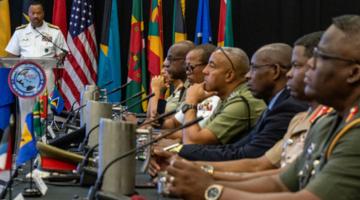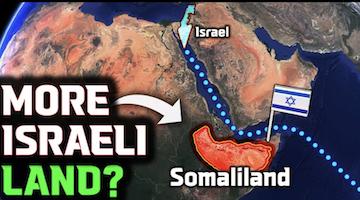After the CIA orchestrated the 2004 coup in Haiti, the U.S. ushered in a genocidal paramilitary organization from the Balkans to violently remove all resistance to regime change efforts.
Originally published in Kit Klarenberg.
On December 19th, James Foley, US ambassador to Haiti 2003 - 2005, published an explosive op-ed in rabidly anti-Communist Miami Times. He lamented how the country had become a “ticking time bomb”, with hundreds of thousands of refugees threatening to emigrate Stateside, “mounting gang violence”, withdrawal of “humanitarian relief organizations” due to “threats”, and “criminal” entities “on the verge” of capturing Port-au-Prince entirely. His remedy was simple - direct US “intervention” to secure control locally, and reassert Washington’s “primacy in the hemisphere.”
As the CIA’s man in Port-au-Prince at the start of the millennium, Foley was on the frontlines of a brutal coup that displaced popular, legitimately-elected, anti-imperialist President Jean-Bertrand Aristide from power, and all the horrors that followed. As this journalist and academic researcher on Haiti Jeb Sprague exposed in February, Aristide’s ouster was orchestrated by the Agency, in direct coordination with the most extreme, murderous local opposition elements. This tragic event produced a neverending descent into nightmarish lawlessness, which endures to this day in the country.
Massacres of innocent civilians are now a daily staple of life in Haiti, civil society is non-existent, and major powers exploit the chaos to road-test techniques of repression and pacification subsequently deployed elsewhere. Yet, there is a fundamental component of this nationwide misery that has hitherto remained unexamined. In September 2004, USAID’s Office of Transition Initiatives, which avowedly “advances US foreign policy interests…by seizing emerging windows of opportunity ” - in other words, oversees regime change - deployed Kosovo Liberation Army veterans to Port-au-Prince:
“Training and management specialists of the Kosovo Protection Corps, a civilian response unit consisting primarily of former Kosovo Liberation Army members, have been brought to Haiti to assess how the Kosovo model might be applied there.”
The KLA was a sadistic, civilian-targeting, organ-harvesting CIA and MI6-backed narcoterrorist militia that for years waged a savage insurgency in Yugoslavia. Their aim was to forge an ethnically-pure Kosovo, in service of recreating Nazi-era Greater Albania. Once Yugoslav forces departed the province following a three-month-long NATO bombing campaign against Belgrade in June 1999, the KLA began carrying out a total genocide of local non-Albanian inhabitants, killing countless Bosniaks, Roma, Serbs, and other minorities, while sending survivors scurrying.
Albanians were not infrequently in the KLA’s crosshairs too, whether they were criminal rivals, supported multiethnic Yugoslavia, or simply rejected the lethal faction’s excessive barbarity. The KLA was largely insulated from legal repercussions for its monstrous crusade, by direct US decree. However, the 2005 indictment of Kosovo’s then-Prime Minister Ramush Haradinaj and his deputy Idriz Balaj, both former high-ranking KLA operatives, details a typical fate that befell those who crossed the Al Qaeda adjunct. After capturing three members of a Romani family, and severing one of their noses:
“Idriz Balaj cut each of the three men on their necks, arms and thighs, rubbed salt into the cuts and sewed them up with a needle. Idriz Balaj then wrapped [them] in barbed wire and used an implement to drive the barbs of the wire into their flesh. Idriz Balaj also stabbed [one] in the eye. The three men were then tied behind Idriz Balaj’s vehicle and dragged away…They have not been seen alive since this day and are presumed to have been killed.”
Haradinaj was accused of a welter of similarly hideous crimes, including multiple rapes, and personally planning and overseeing the KLA’s frenzied, ultraviolent post-bombing genocide in Kosovo. Come November 1999, KLA “murder and kidnap” in the NATO-occupied Yugoslav province reduced Pristina’s Serb population from 40,000 to just 400. Yet, Haradinaj spent just two months in prison. Coincidentally, he was widely reported to have served as the KLA’s “key US military and intelligence asset” during NATO’s bombing.
‘Kosovo Model’
The KLA was tutored in its boundless savagery by British and American military and intelligence, and contractors including notorious MPRI. The Kosovo Protection Corps was its UN mandated successor, charged with acting as first responders in certain contexts, but formally prohibited from performing law and order functions, due to its parent organisation’s obscene history of gruesome sectarian violence. It was supposed to be disarmed, but this never materialised. The Corps was the absolute last entity one would consult to restore stability in tumultuous post-coup Haiti.
Yet, Washington had long-planned to “transform the [KLA] from a rag-tag band of guerrilla fighters into a political force.” Strikingly, none other than future Haiti ambassador James Foley was at the forefront of these efforts. As a senior State Department official during NATO’s criminal bombing of Yugoslavia, he went further than any other US apparatchik in not only openly celebrating Washington’s intimate bond with the mass-murdering militia, but uniquely acknowledged the KLA was being primed to become a governance actor in post-war Kosovo:
“We want to develop a good relationship with them as they transform themselves into a politically-oriented organization…[The KLA] would have the chance to move forward in their quest for self government under a ‘different context’. If we can help them and they want us to help them in that effort of transformation, I think it’s nothing that anybody can argue with.”
Foley uttered those comments in February 1999, before NATO’s villainous assault on Yugoslavia began. Evidently, even at that early stage, he and other US officials were looking ahead to Kosovo metamorphosed into a US colony, with its KLA assets running the show, brutally purging anyone and anything standing in Waashington’s way. Which is precisely what came to pass. Foley’s appointment as US ambassador to Port-au-Prince in May 2003 may also indicate eerie foresight among certain actors about what would soon transpire in Haiti.
Aristide’s removal would never be taken lightly by his local supporters, not least due his ouster inevitably unleashing dangerous criminal, militant, fascist elements, who would target them. This included adherents of US puppet François Duvalier, who ruled Haiti 1957 - 1971 as a brutal police state, via a devilish apparatus of spying and terror units. This Mephistophelian nexus was smashed to smithereens by Aristide, with nigh-universal public support. Resultantly, many Haitians favoured self-defence, were armed, and prepared for trouble, should it arise.
Therefore, we can surmise that a brutal crackdown on Aristide supporters was considered certain, and being planned, by the US almost a year before the February 2004 coup. Foley’s beloved KLA were ideal candidates not only for strategising such bloodshed, but also helping transform Washington-backed rebel paramilitary factions in Haiti into formal police and military units, to execute campaigns of violence and repression against specific target groups, under a legitimising imprimatur. This was the “Kosovo model” USAID sought to apply to Port-au-Prince, post-Aristide.
‘Violent Nation’
So it was in January 2004, during a Western-boycotted bicentennial celebration of Haiti’s independence from France centuries prior, attended by Aristide and guests including South African President Thabo Mbeki, local putschists intervened to wreck the gathering, engaging in brutal violence. This was the spark that ignited the CIA’s coup in Port-au-Prince, a month later. It was, per a leaked US diplomatic cable, orchestrated by the Agency in conjunction with “questionable individuals”, such as local paramilitary-tied oligarch Hugues Paris.
Aristide was promptly kidnapped by US forces, then flown to South Africa. His modest yet contextually revolutionary social reforms immediately repealed, Haiti abruptly descended into a failed state. Savage paramilitary forces worked overtime to suppress public opposition, particularly among the felled President’s support base. Meanwhile, thousands of UN and US “peacekeepers” ostensibly deployed to maintain order and prevent massacres of civilians were directly implicated in those very slaughters. Precisely the same horrendous story played out in Kosovo, courtesy of the KLA, post-June 1999.
Britain’s esteemed Lancet Medical Journal found approximately 8,000 people were murdered in Port-au-Prince, within two years of the February 2004 coup. In the span of just one month, 1,000 bodies were dumped in a mass grave. Simultaneously, Haiti’s state structures were purged of any and all officials still loyal to Aristide, and his progressive programs. Mass government department layoffs and brutal crackdowns on unions were routine. Dissident journalists faced arrest or even murder. Pro-Aristide media outlets were shuttered, typically at literal gunpoint.
Paramilitary faction National Revolutionary Front for the Liberation and Reconstruction of Haiti was at the forefront of the coup in Port-au-Prince. Immediately, Western news outlets began talking up the savage faction as Haiti’s next government. In April 2004, longtime anti-Aristide mainstay and FLRN chief Guy Philippe told the Miami Herald his first act in office, if elected, “would be to reinstitute” Haiti’s army, to “give the violent nation a sense of security.” It would also hopefully encourage foreign oligarchs to make a mint in Port-au-Prince:
“This would be a professional army, not the one we had…You can’t have foreigners invest without security.”
The same report noted that ultra-violent elements central to Aristide’s ouster “will turn their weapons over to police next month.” Presumably, in precisely the manner the KLA didn’t. Those belligerent rebel factions were subsequently transformed into an almost identically named political party, National Reconstruction Front. The outlet’s deference to Philippe couldn’t have been clearer. Miami Herald referred to the mass murderer as “wildly popular”, while praising his “boyish charisma”, despite acknowledging his personal connections to “drug trafficking.”
As it was though, in Haiti’s February 2006 presidential election, Philippe won just 1.97% of the vote. A similar result was achieved by FRN in concurrent Senate elections, leaving them with no elected representatives. Fast forward to today, and he and his party have been rather forgotten. In the intervening time, the chaos unleashed by the CIA and sustained by the KLA 20 years ago in Haiti has only intensified. And now Washington has an ideal pretext - and self-authored legal justification - for all-out invasion.

